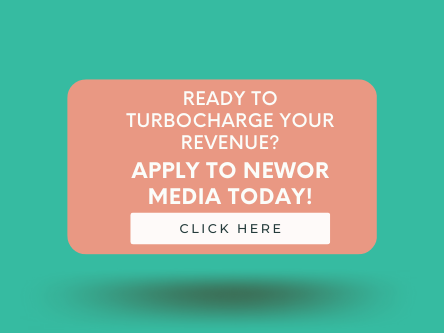
Monetizing niche content has become a powerful strategy for publishers in the digital landscape. Whether you’re creating content around sports, entertainment, technology, or education, there are specific approaches that can help you generate revenue and engage your audience. Niche content, which caters to specialized interests, offers unique advantages when it comes to audience engagement and monetization, but it also requires a tailored approach to maximize its potential.
In this article, we’ll explore some of the key strategies publishers can use to effectively monetize niche content across various verticals.
Why Niche Content Is Valuable
Niche content taps into specific interests, often appealing to a dedicated and loyal audience. These readers or viewers are typically more engaged because the content speaks directly to their passions. Whether it’s fans following a sports league, tech enthusiasts keeping up with the latest gadgets, or educators seeking insights into new teaching methods, niche audiences tend to be highly invested in the content they consume.
This high level of engagement creates opportunities for monetization through targeted advertising, subscriptions, sponsorships, and other revenue models. Advertisers, in particular, are often willing to pay more to reach these specialized audiences because they know the audience is more likely to engage with relevant ads.
The challenge lies in developing the right strategies to fully capitalize on this potential.
Strategies for Monetizing Niche Content
- Tailored Advertising Approaches
Niche audiences are more receptive to ads that align with their specific interests. Publishers can increase their ad revenue by working with ad partners who understand the value of contextual targeting—ensuring that ads are relevant to the content being presented. This strategy can increase engagement rates and ultimately lead to higher returns for publishers.
For example, a sports website can feature ads for athletic gear, while a tech site might prioritize ads for the latest gadgets. The more aligned the ads are with the audience’s interests, the more likely they are to be effective. - Programmatic Advertising
Programmatic advertising automates the buying and selling of ad space, ensuring that each ad impression is optimized for revenue. This is particularly beneficial for niche publishers, as programmatic technology can tailor ads based on real-time bidding and the specific interests of the audience.
Publishers working in verticals like technology or education can benefit from programmatic advertising because it ensures that high-value, relevant ads are served to their readers, maximizing the revenue generated from each impression. - Utilizing Diverse Ad Formats
It’s important for publishers to experiment with various ad formats to find what works best for their audience. Different formats such as display ads, video ads, native ads, and even affiliate marketing can be effective depending on the type of content and the user experience.- Display ads might work well for websites with a lot of traffic and high page views.
- Video ads can be particularly effective for entertainment and sports content, where visuals play a key role.
- Native ads tend to blend seamlessly into editorial content, making them a good option for education-focused websites that want to maintain the trust of their readers.
- Affiliate marketing is another avenue, particularly useful for technology sites that often review products, as they can recommend products and earn commissions on any resulting sales.
- Vertical-Specific Approaches
Publishers in different verticals need to tailor their monetization strategies to fit their audience. Here’s how some verticals can maximize their potential:- Sports: Sports sites often feature time-sensitive content like live updates, scores, and highlights. Incorporating real-time ads or video ads during key moments can be highly effective. Publishers can also explore sponsorship opportunities with sports brands.
- Entertainment: Entertainment sites can benefit from video ads, especially when presenting trailers, clips, or celebrity interviews. These ads can be integrated into the content flow without disrupting the user experience.
- Technology: Tech publishers can capitalize on affiliate marketing by promoting gadgets, software, and tech services. Reviews, tutorials, and product comparison articles can include affiliate links that drive sales, providing an additional revenue stream beyond traditional ads.
- Education: For education publishers, native ads and sponsored content often work well. Readers of educational content are generally looking for in-depth material, so ads that blend naturally into long-form articles can feel less intrusive while still being effective.
- Implementing Ads.txt for Transparency and Trust
Ads.txt is a simple but important tool for ensuring transparency in digital advertising. It allows publishers to declare who is authorized to sell their ad inventory, reducing the risk of fraud and ensuring that advertisers are buying legitimate impressions. Maintaining an updated ads.txt file is especially important for niche publishers who rely on building trust with both their audience and advertisers. - Building a Direct Relationship with Advertisers
Publishers can also explore direct relationships with advertisers in their niche. Rather than relying solely on ad networks, negotiating direct deals can result in more favorable terms and higher returns. This approach allows for more control over the types of ads being shown and ensures that they align closely with the content and audience. - Subscription Models and Paywalls
While advertising is a common revenue stream, niche publishers can also explore other models like subscriptions or paywalls. If the content is highly valuable and unique, readers may be willing to pay for access. This model works particularly well for education or technology sites that offer in-depth, expert-level content not readily available elsewhere.
Maximizing Revenue Potential: Consistent Testing and Optimization
The key to successfully monetizing niche content lies in consistently testing and optimizing different strategies. Audience behaviors can change over time, and what works for one niche may not be as effective for another. By regularly analyzing performance data, publishers can identify which ad formats, placements, and content types are driving the most revenue and adjust their approach accordingly.
Publishers should also stay on top of industry trends and emerging technologies that may present new opportunities for monetization, such as programmatic direct or new ad formats designed to enhance user engagement.
Final Thoughts
Monetizing niche content can be a highly effective strategy for publishers looking to generate sustainable revenue. The specific nature of niche audiences allows for targeted, high-value advertising and other creative monetization models, but it requires careful planning and constant optimization. By leveraging the right mix of strategies—tailored advertising, programmatic technology, diverse ad formats, and even direct relationships with advertisers—publishers can maximize their revenue potential while continuing to engage their loyal audience.
Whether you’re focused on sports, entertainment, technology, or education, the path to thriving as a niche publisher is clear: invest in understanding your audience, stay flexible with your monetization approach, and always be open to new opportunities for growth.

